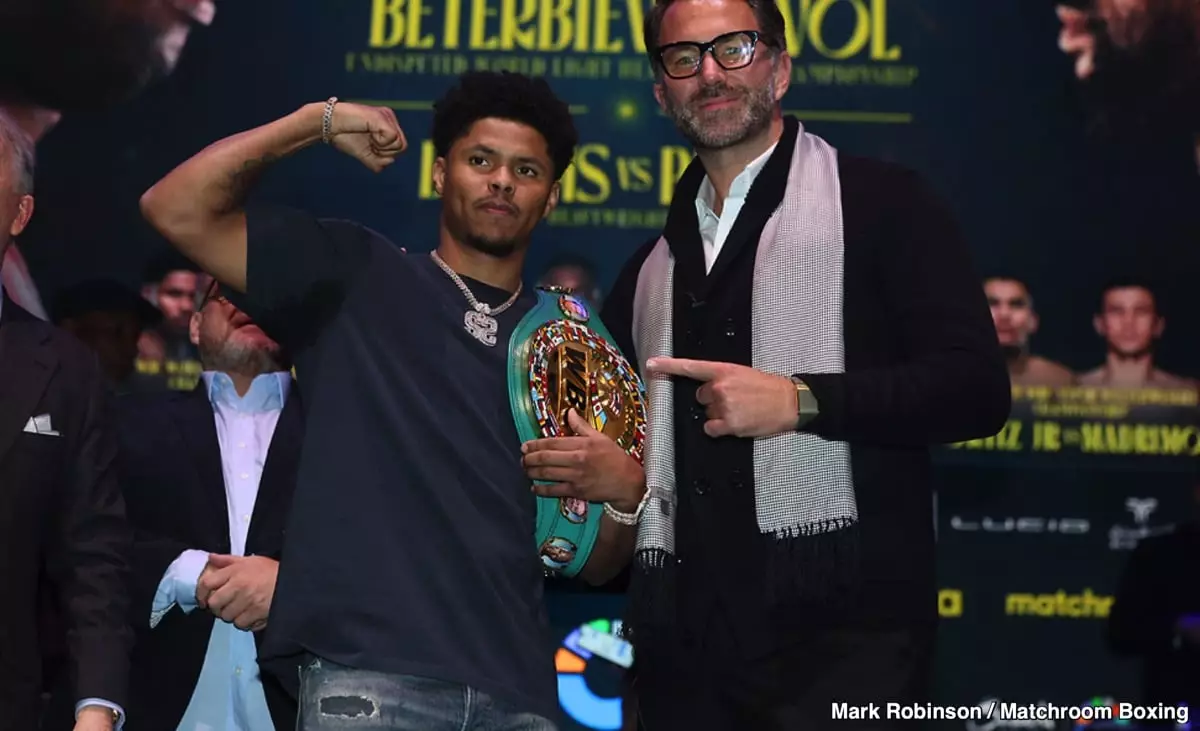In the evolving realm of boxing, opinions often diverge, especially when it comes to fighter styles and the resulting entertainment value. Mikey Garcia, an accomplished former champion, recently expressed his reservations about Shakur Stevenson’s approach to fighting, particularly in a potential matchup against Gervonta “Tank” Davis. Garcia’s insights serve as a lens through which we can examine the broader implications of boxing styles on fan engagement and marketability.
Garcia’s critique centers on the notion that Stevenson’s style, characterized by technical prowess and an emphasis on skill, lacks the excitement that fans yearn for. He articulates that while Stevenson is undoubtedly a talented fighter—boasting an undefeated record and commendable skills—his cautious, counter-punching technique could lead to unexciting bouts. For fans, the thrill of the sport often hinges on high-octane exchanges and the visceral impact of punches landing, an experience that Stevenson may not provide given his strategic fighting philosophy.
At the crux of Garcia’s argument lies a fundamental tension between the fighters’ artistic integrity and the expectations of an audience craving action-packed spectacles. Stevenson has demonstrated a willingness to prioritize victory over entertainment, making strategic decisions designed to ensure his success. This brings about a philosophical conundrum: should a fighter compromise their style to cater to fans, or stay true to their instincts in pursuit of victory?
Garcia highlights this dilemma by contrasting Stevenson with fighters like Vasiliy Lomachenko, who, despite also being technically proficient, bring a more engaging presence to the ring. Lomachenko’s aggressive tactics and willingness to engage with opponents can create thrilling bouts, solidifying his appeal to audiences — something that Stevenson must grapple with if he wishes to garner broader support.
As Shakur Stevenson aggressively promotes a future fight with Gervonta Davis, his fixation becomes apparent in his interactions leading up to his title defense against Floyd Schofield. Garcia suggests that Stevenson’s fixation on Davis has overshadowed his immediate responsibilities, potentially jeopardizing his focus. Fighters often face pressure to create narratives that will attract larger audiences, and Stevenson’s strategy appears predicated on establishing Davis as the ultimate challenge.
However, Garcia warns that unless Stevenson modifies his fighting style, he may find it difficult to secure those high-profile bouts he covets. The boxing landscape is often dictated by the perceived risk of a matchup and the potential entertainment value associated with it. In Stevenson’s case, overcoming the stigma of being a “boring” fighter may prove essential for his aspirations in the lightweight division, where entertainment often translates into bigger paydays.
Delving deeper, Garcia raises concerns about the matchmaking processes that underpin major fights, suggesting that willingness on the part of promoters, especially figures like Turki Al-Sheikh, can play a pivotal role in shaping fight outcomes. If a promoter sees value in a matchup, they hold the power to make it a reality, regardless of the fighters’ styles. Yet fans’ preferences must also be accounted for; a fight perceived as lacking excitement may not generate the requisite interest to warrant a substantial financial investment from promoters.
The potential bout between Tank Davis and Shakur Stevenson hinges on this balance. Garcia’s assertion that the fight could lack fireworks due to Stevenson’s approach raises critical questions about the future of matchmaking in boxing. The success of boxing as an entertainment medium often depends on finding that sweet spot—a balance between skillful fighting and engagement that captivates audiences.
Ultimately, the comments from Mikey Garcia illuminate the challenging future ahead for Shakur Stevenson. While his technical abilities are undeniable, the expectations of modern boxing fans may necessitate a reevaluation of how fighters approach their craft. If Stevenson aspires to be considered among the elite and secure high-profile matchups, he may need to evolve beyond his current paradigm. The intersection of skill, fan engagement, and promotional dynamics will shape the path forward in this complex and ever-evolving sport. In boxing, as in life, the balance between personal authenticity and societal expectations is often the most difficult journey of all.


Leave a Reply